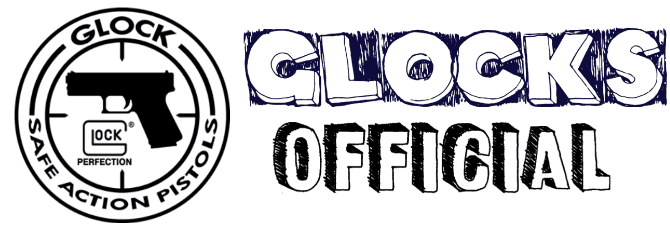Introduction
If you’re here, you probably realize that…shooting pistols is actually pretty hard!
In the beginning of my shooting experience, I had a lot of sympathy with the Stormtroopers missing everything too. At least they had the excuse of a stressful situation!
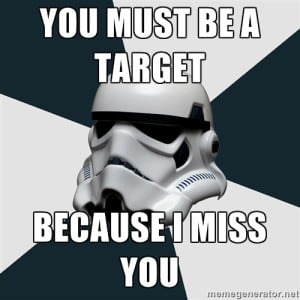
Now I’m not some professional competitive shooter or instructor, but take that as a positive…I still remember how it felt when I couldn’t hit anything and the differences each tip/exercise made in my development.
It’s going to take you a while, but let’s get started in making you a more accurate pistol shot beginning with fundamentals.
Shooting Stance
Some of you might scoff at the idea of how you stand has anything to do with how you shoot.
But think of it as the foundation of everything.
If you have a wobbly base, chances are it doesn’t take much to mess up whatever is on top. And loud explosions and recoil have a way of messing stuff up.
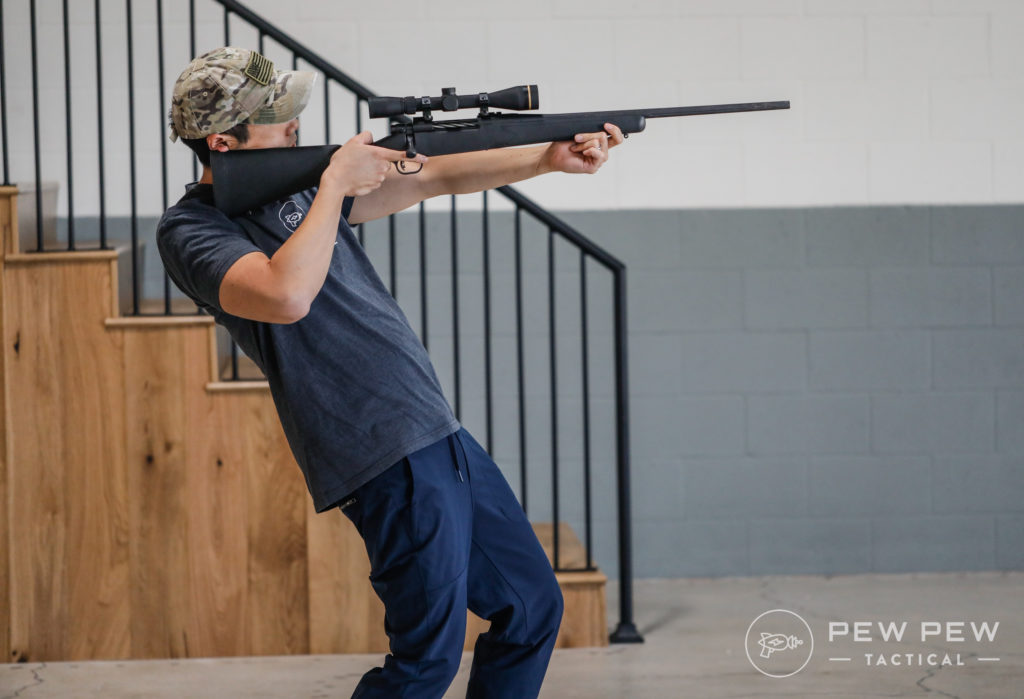
The main thing is to have a stable/comfortable stance that tilts you a little forward to manage recoil. Don’t worry if you have ever done that newbie lean (back).
Now’s the time to correct it!
If you want to get more technical, there are the three main types of stances: Isosceles, Weaver, and Modifed Weaver (Chapman).
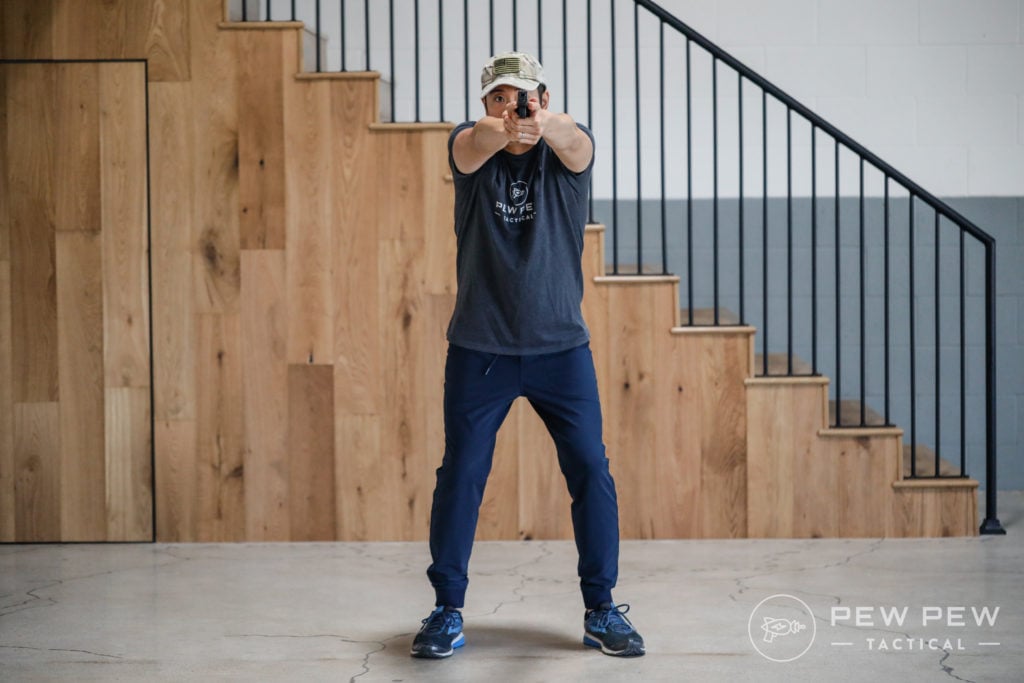
They are just variations on some foot placement and what arm is flexed a little more. But just notice how stable I look and the slight lean forward.
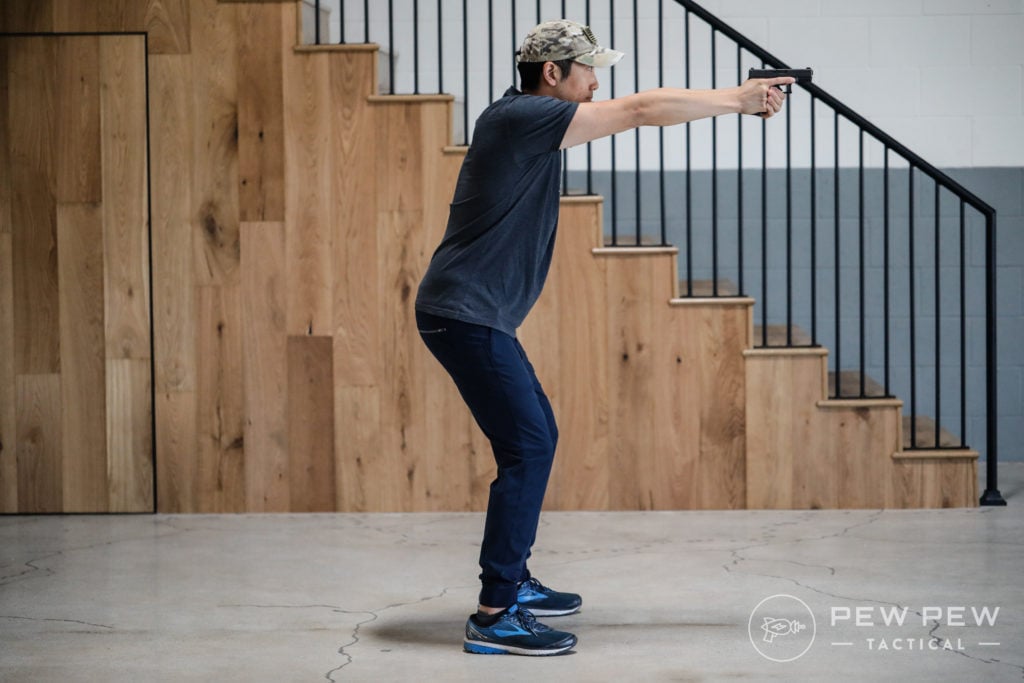
And why’s it called isosceles? Thanks high school trigonometry class!
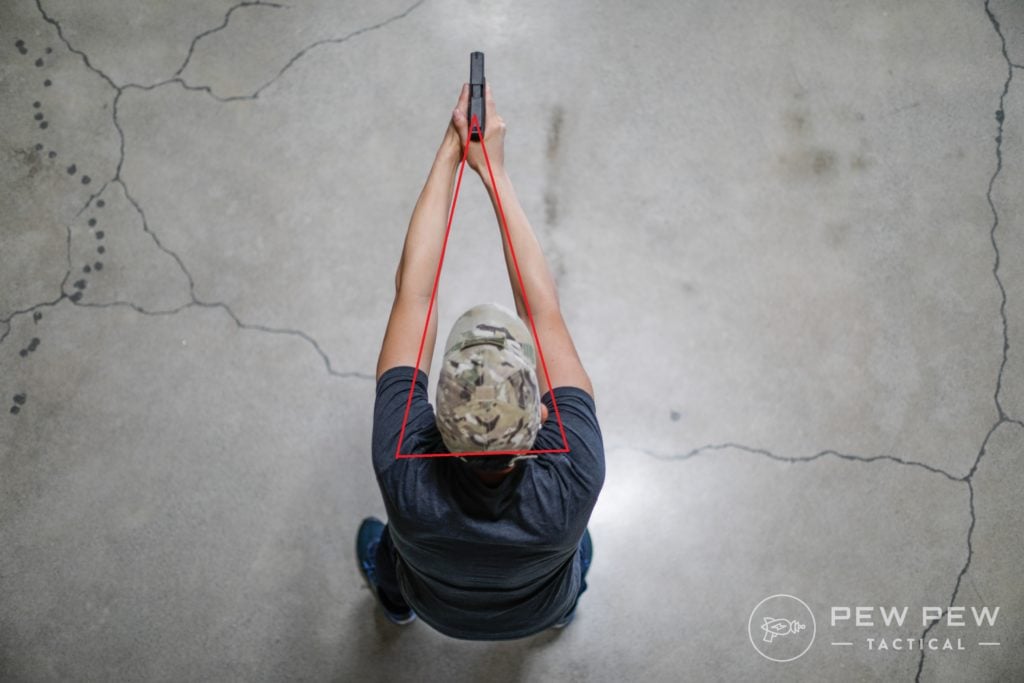
My favorite (Chapman) is geared towards being right handed but left-eye dominant.
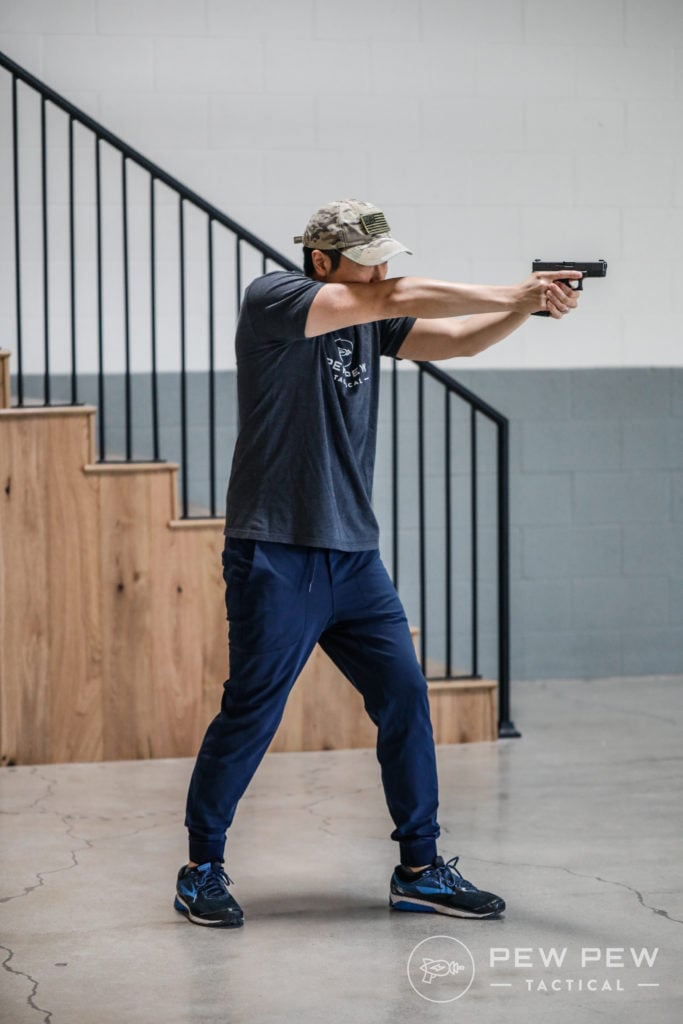
Choose what feels most comfortable for you…but I go through all three stances in my Stances article.
Handgun Grip
My first advice received about handgun grip was from the salesman at my local gun shop. He asked me to grip his hand with the same strength I’m going to grip my future 1911.
I gave him a nice firm handshake while he proceeded to crush my hand.
A dick move, but a great lesson.
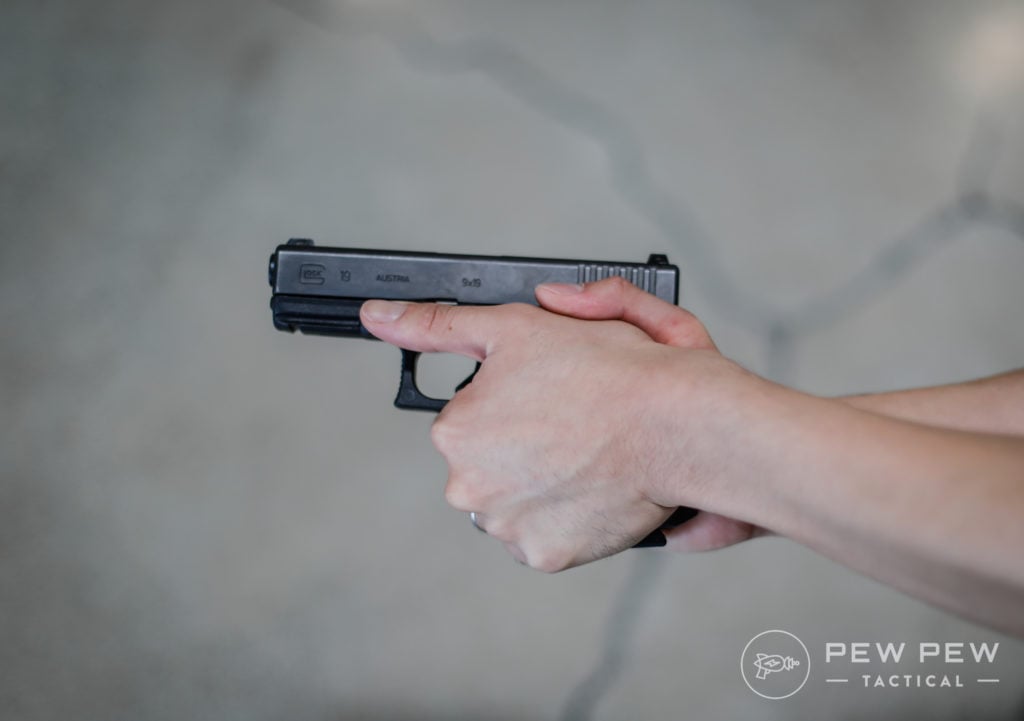
I’m now an advocate of gripping as hard as you can but not so much that you have tremors. I’ve found that having a crushing grip on the gun reduces the movement of your non-trigger-fingers, which is a good thing.
And how you hold the gun also has a huge effect on your accuracy.
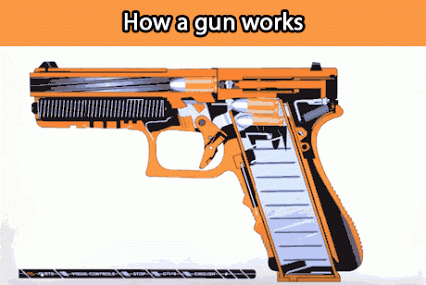
You want the web between your trigger finger and thumb to be as high as possible on the grip to contain the recoil of the slide moving back and forth.
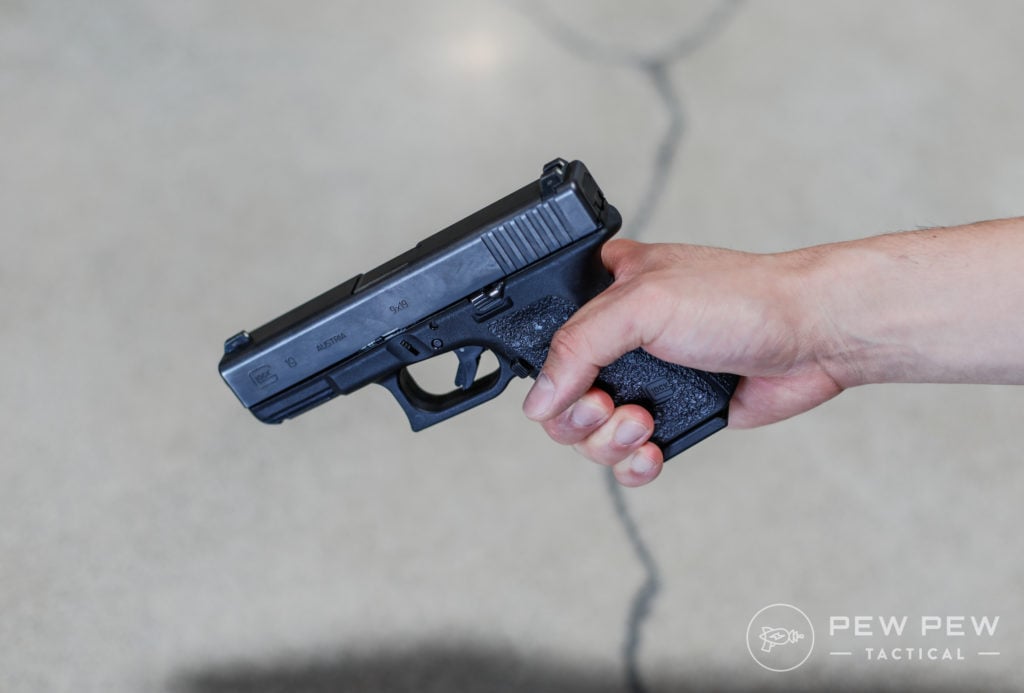
You can imagine the gun flipping with the recoil with a low grip. You’ll want to almost jam your hand/web into the backstrap to get a high grip.
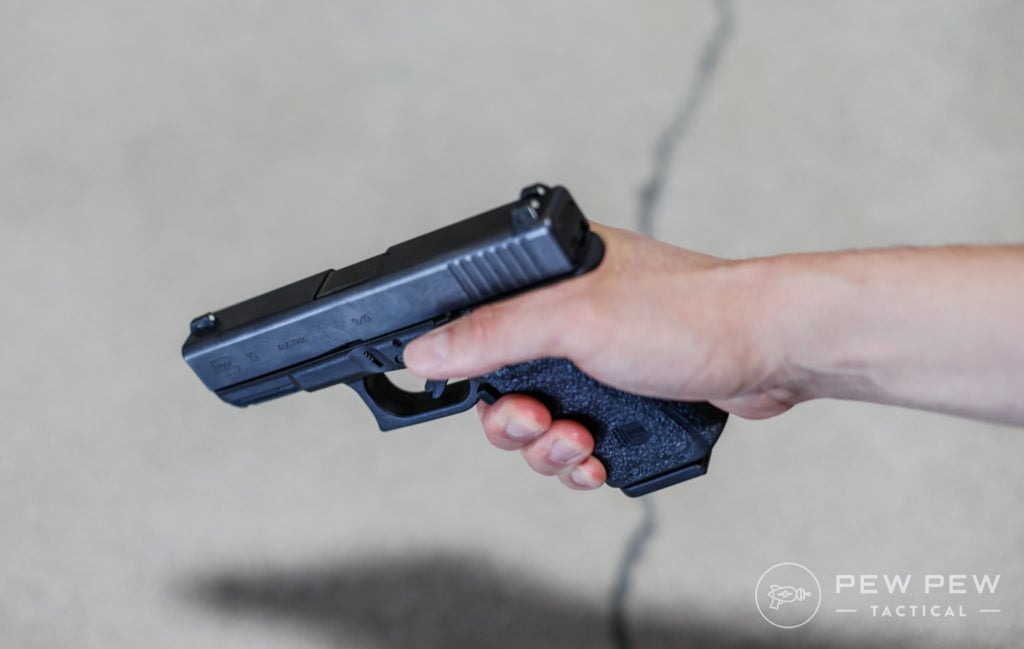
And because there’s this piece of metal moving back and forth, you want your forearm in line with the gun to absorb more recoil.
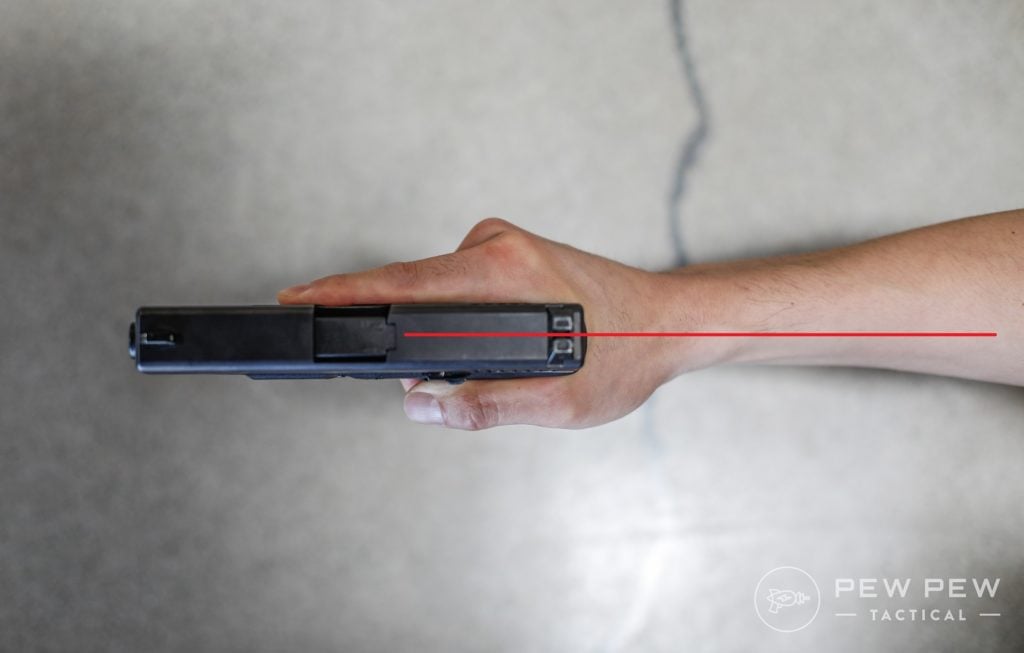
You’ll be tempted to first hold it at a slight angle since it feels more natural…but resist!
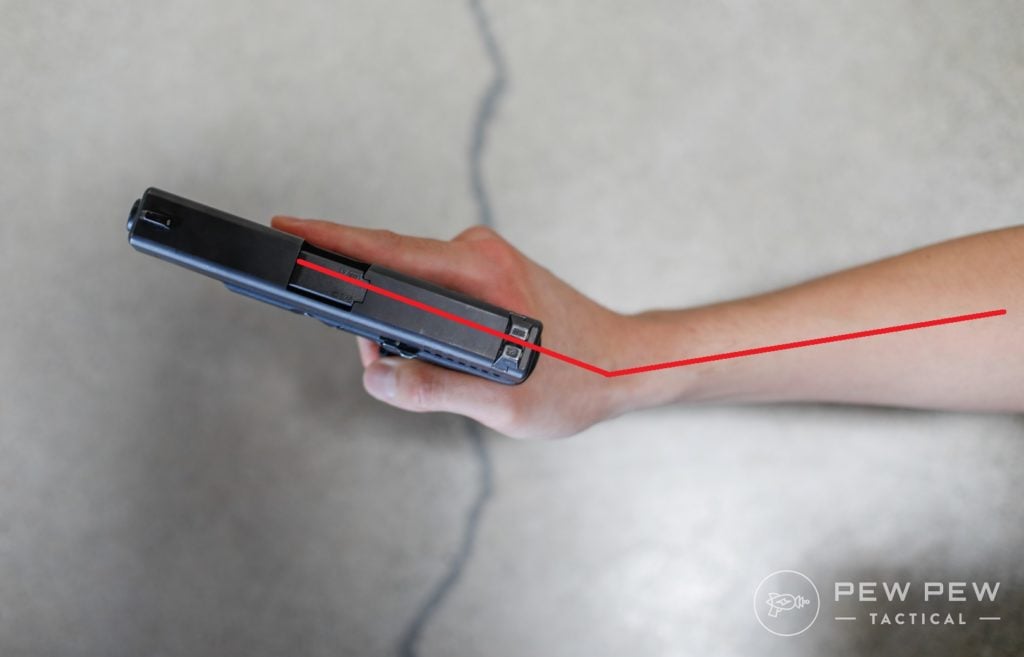
Now that you’ve got your shooting hand grip correct, let’s take a look at the empty space for your non-dominant hand.
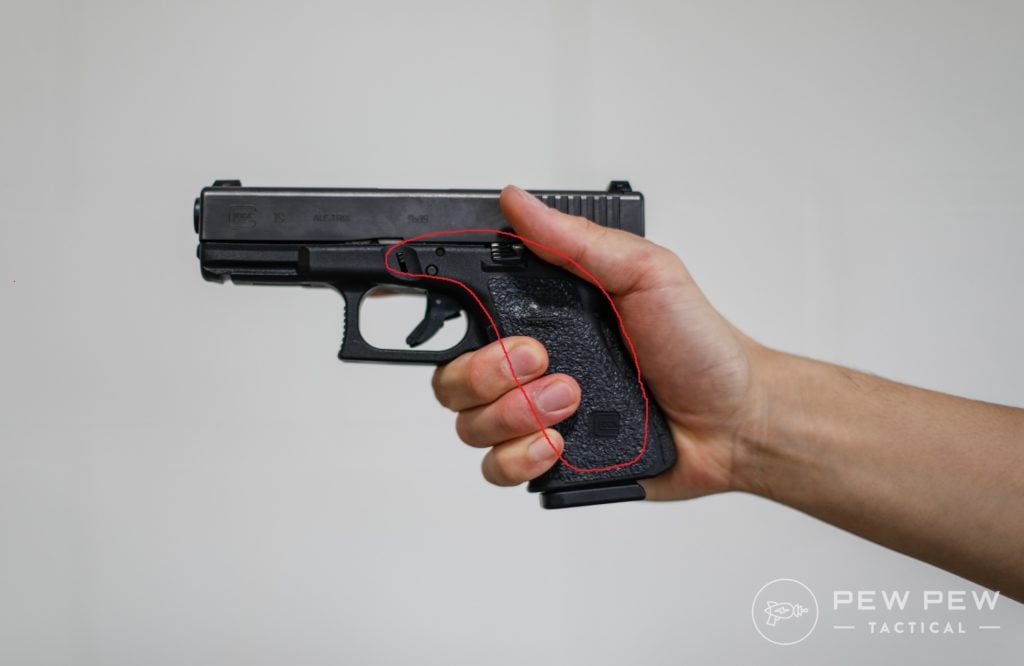
You want to fill it completely up with the other hand so you maximize grip. I like to double-check by making sure there’s a 45 degree angle between my left hand and the handgun slide.
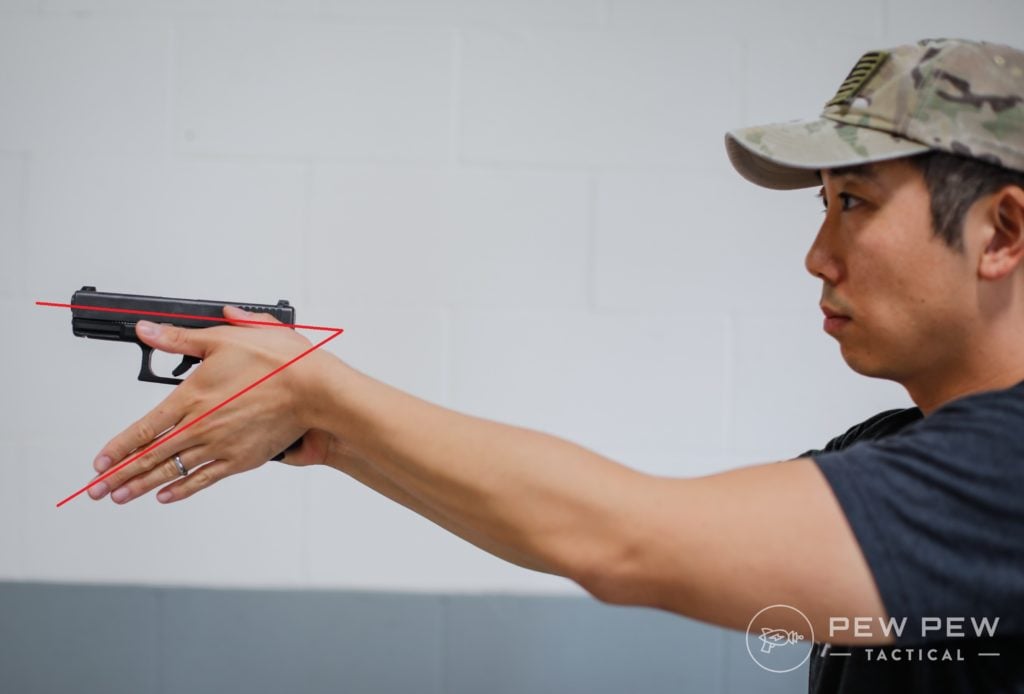
Thumb placement of your dominant hand is personal preference.
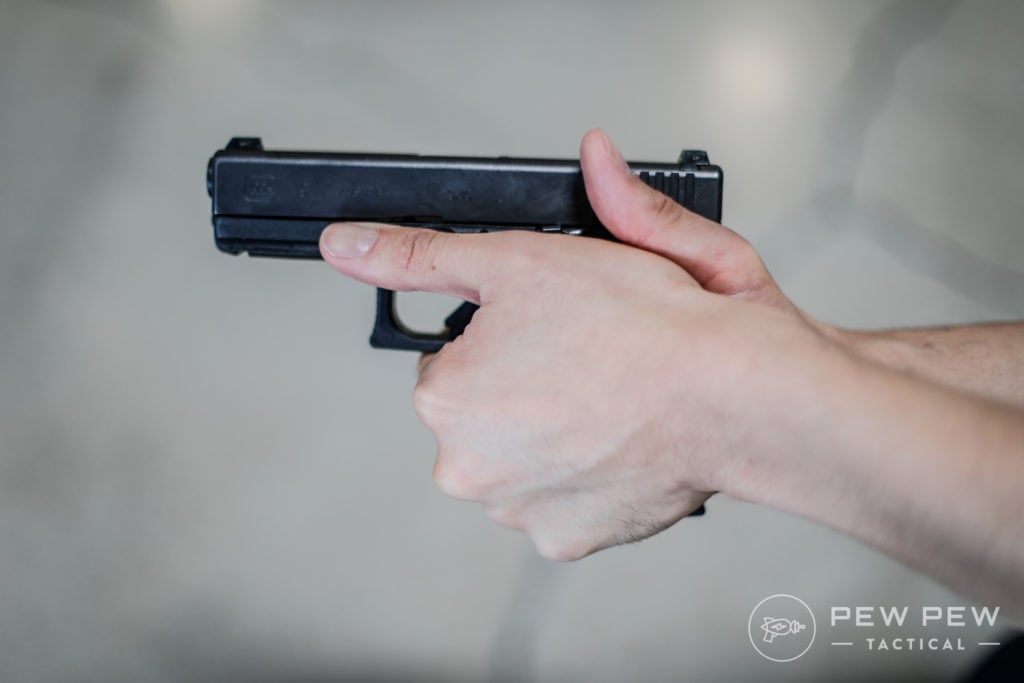
You’ll see both up in the air or pointed towards the target.

Experiment to see what you like or just go with what feels more natural. The non-dominant thumb will run along the frame.
If you’re running a 1911 or something else with a manual safety…
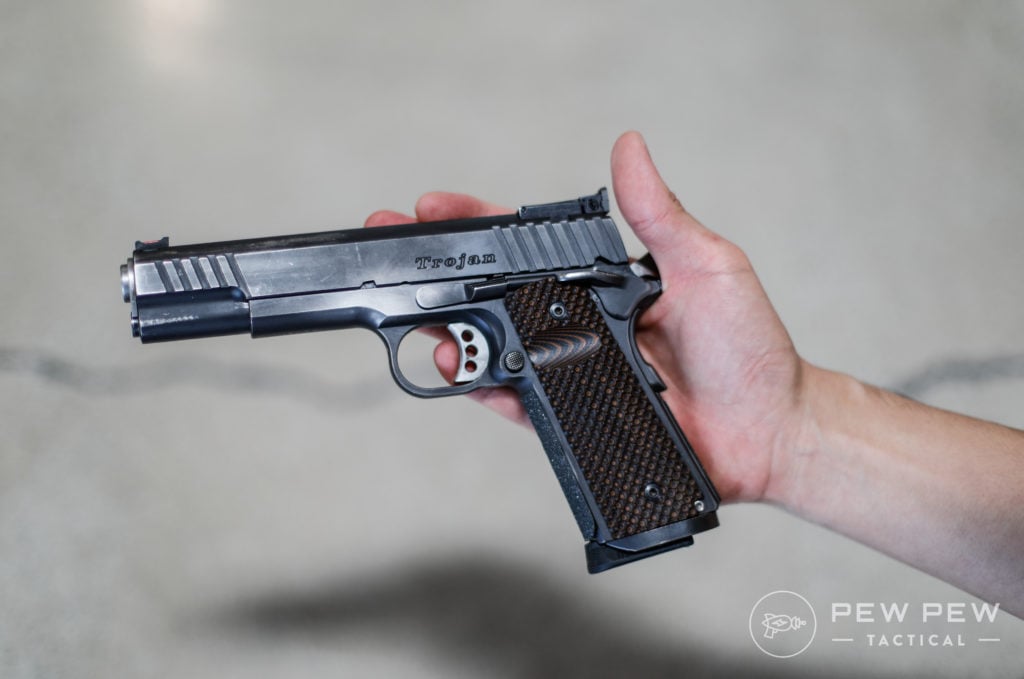
I like to rest my right thumb on it (since it was already there when I disengaged the safety).
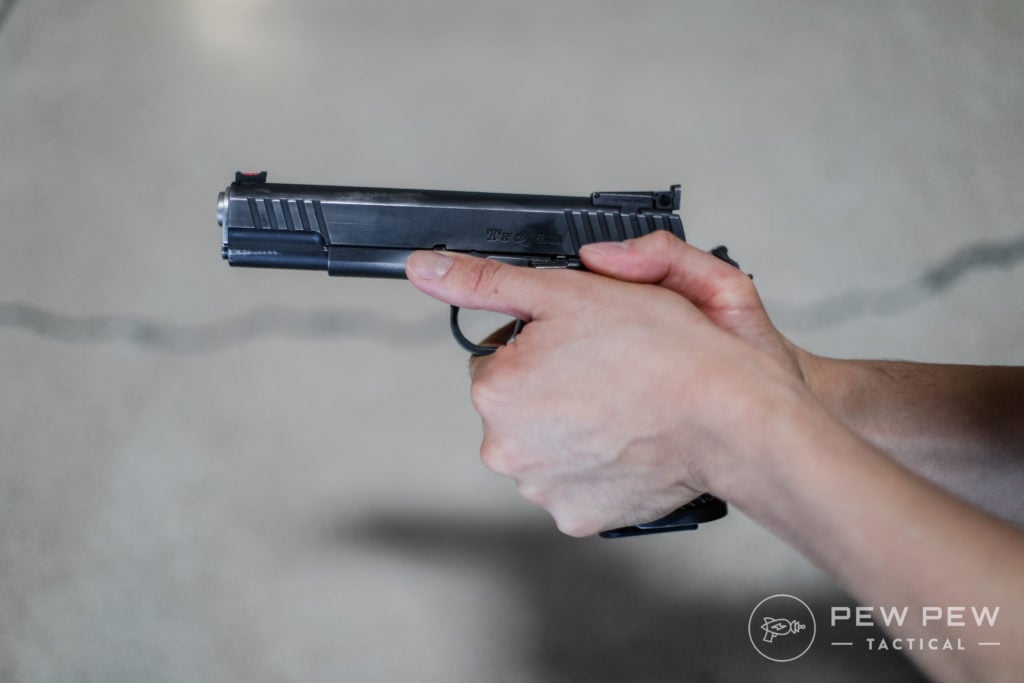
And although it might feel a little weird at first, I like to set my wrist at an angle when I punch out both my arms.
This keeps everything steady and helps prevent limp wristing (floppy wrists that don’t allow proper ejection and loading of the next round).
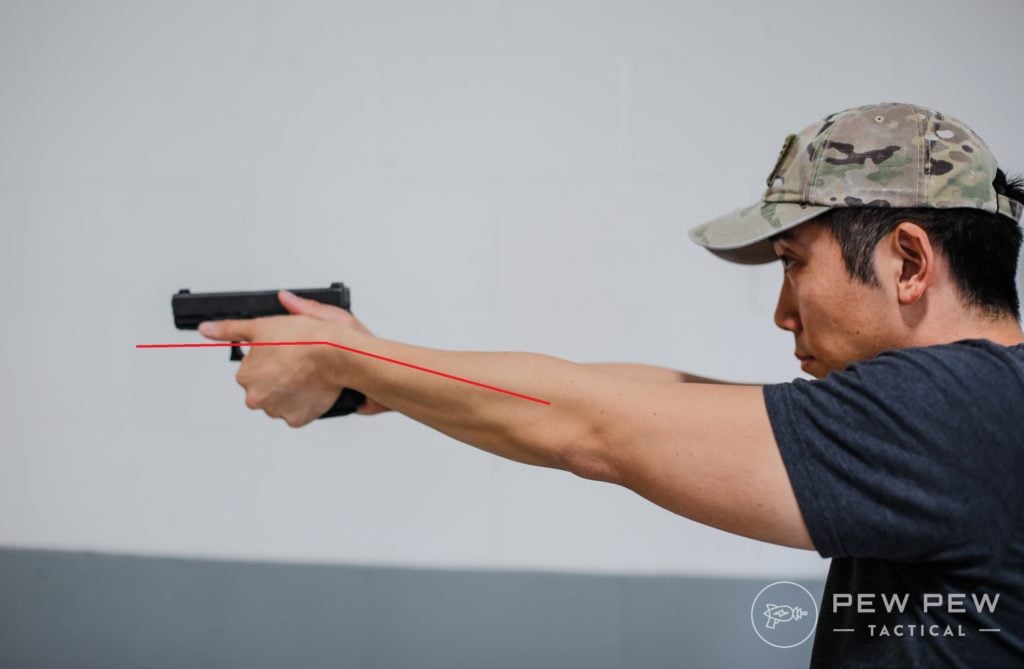
Want to learn more about grip? I cover revolvers and semi-auto grips in more detail in How to Grip a Pistol.
Sight Picture
You’ve probably heard it before…focus on the front sight!
Well it really does help and in the beginning I was squinting hard with just one eye open and trying to focus on the target.
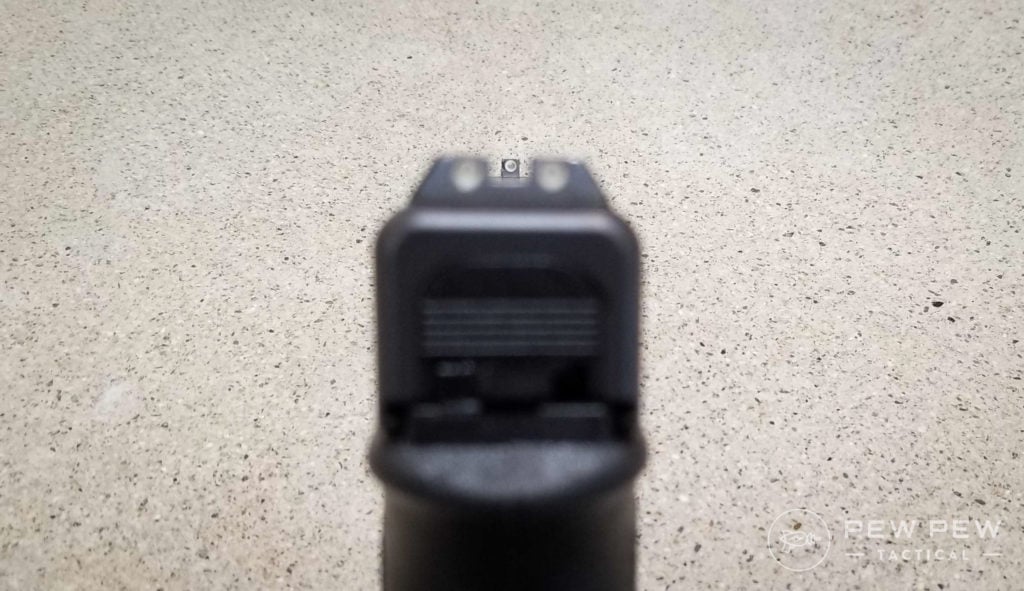
Remember that you want to match the top of the front sight with the top of the rear sight.
The top and middle of the front post is where your rounds should end up…not the actual front dot.
Same for fiber optic sights…
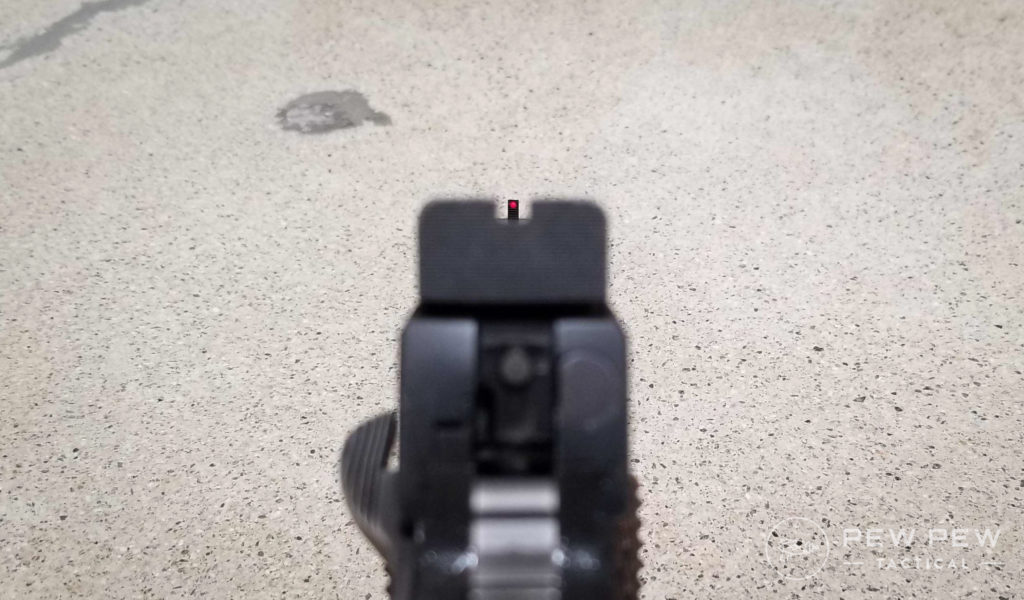
And more standard iron sights.
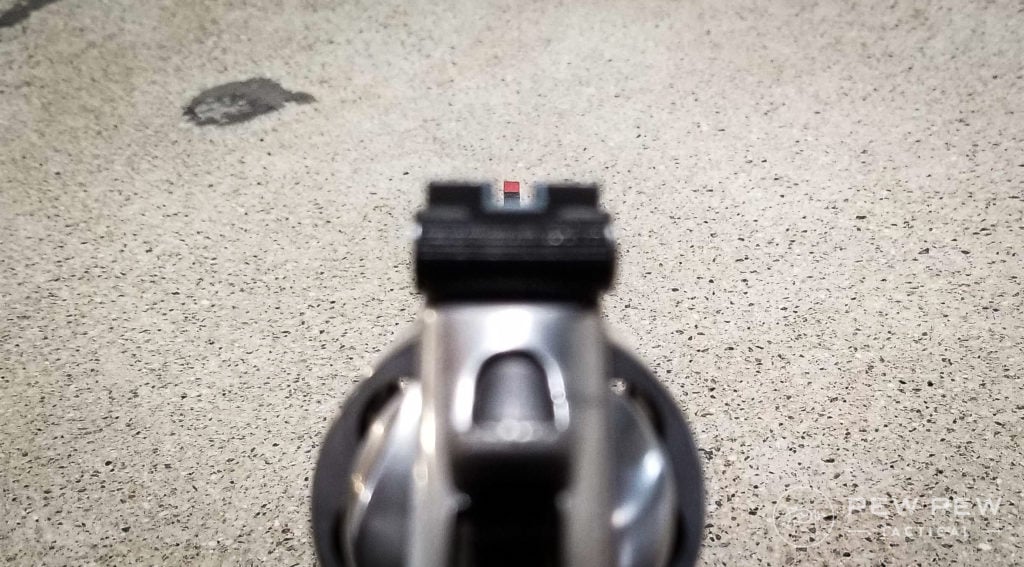
I’ve found it immensely helpful to keep both eyes open.
It will be very difficult at first depending on how long you’ve been shooting with one eye open.
But once you master it, it makes everything so much faster with less eye fatigue.
And now you get more situational awareness.
First thing is to figure out which eye is dominant.
If you’re like me, you’ll be seeing some double-vision because both eyes are open.
I’ve found adjusting your sights closer to your dominant eye (left to right, not closing the distance to your face) makes it a lot easier to figure out which image to use.
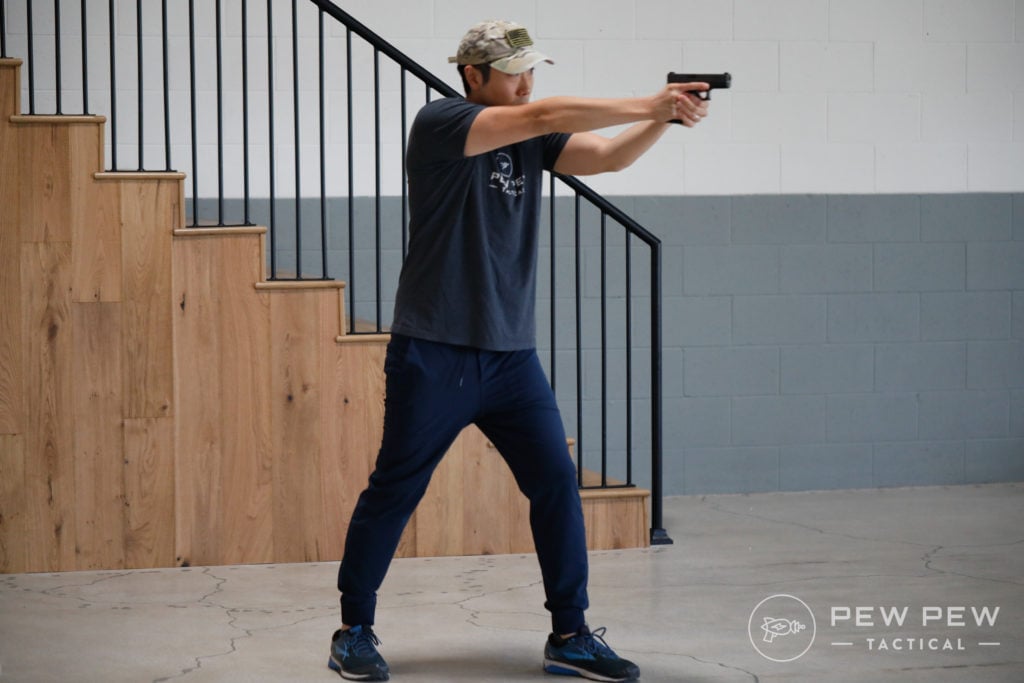
This might be just a little shift if you’re using Isosceles, or it might already be perfect with Weaver.
For me, since I’m left-eye dominant but right hand dominant, I like the Chapman stance since it puts the sights more in line with my left eye.

Trigger Pull
Might be the most important part of everything, and what dry-firing practice is all about below.
The best advice is to squeeze super slowly that you’re almost surprised when the shot breaks.
You’re not yanking on it since that will result in jerking the trigger and sending the shot off.
It will be hard since it’s your gun and you practice with it, so you know when it will break.
But the slower you pull the better your shot will be.
One of the reasons you might shoot someone else’s gun really well the first time is since you don’t know the trigger (and when all the loud noise and recoil will come).
How about where to place your trigger finger?
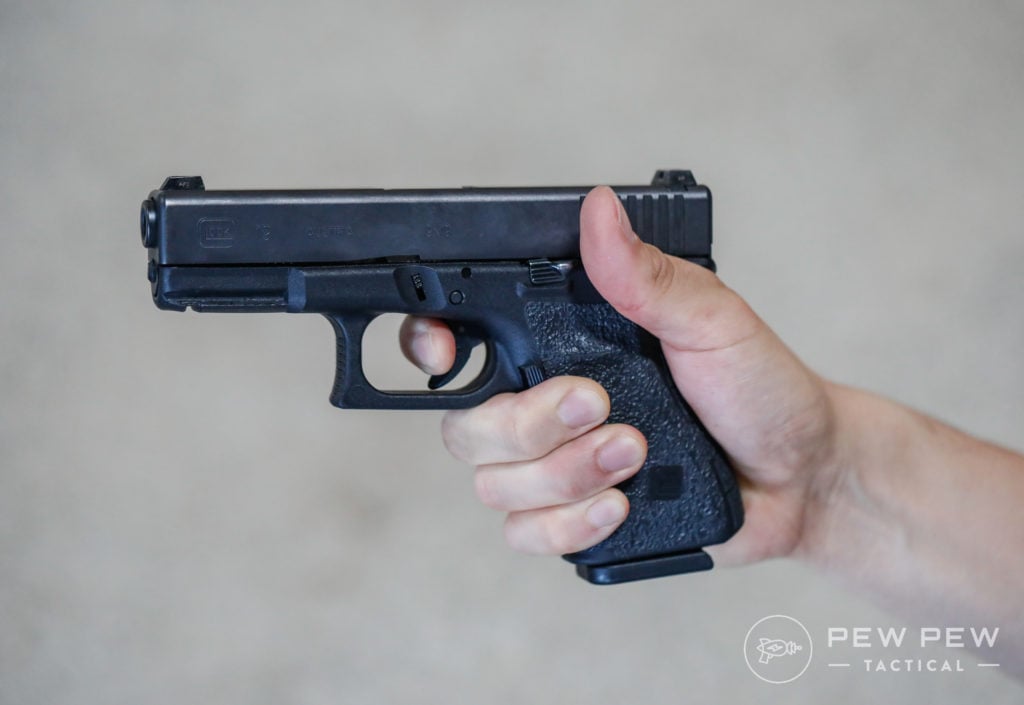
It’s personal preference (and something to do with your finger length too) but I would suggest somewhere between the top quarter of your finger tip to right before the first joint crease.
Keep in mind that the ideal pull would be completely straight back with nothing else moving except the first two joints of your trigger finger. Take a look at your gun and fingers to see what looks/feels the best.
I find that I shoot better when I’m closer to the first joint. This length gives me good leverage and isolates the third section of my trigger finger (closest to hand) so only the first two joints are moving.
Less is more here!
Breathing
One thing I always forget to do when I’m shooting.
Holding in your breath messes you up after a while and so I just try to breath naturally.
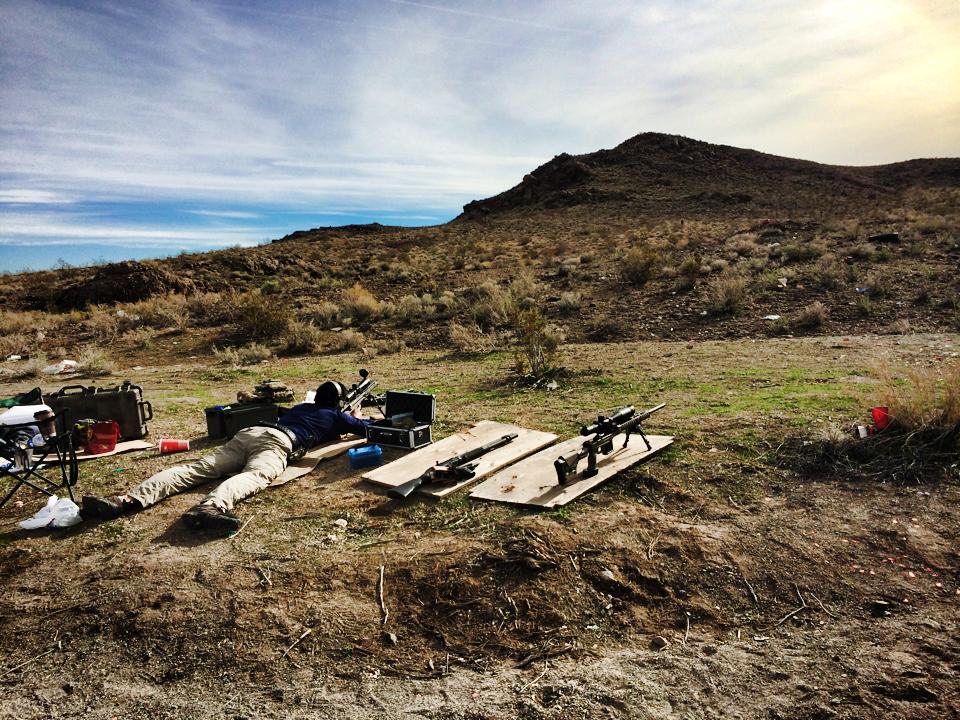
You’re pistol shooting, not sniping 1000 yards, so you don’t have to plan your breaths (and heartbeats).
Trigger Reset
An easy mistake to do is to immediately lift your finger off the trigger after each shot and look at the target.
The hole will always be there so take your time.
Whenever you lift your finger off quickly, you’re likely shooting too fast and jerking the trigger, or introducing excess movement to the gun.
You’re also making it harder for yourself the next shot since you’ll have to pull the first part of the trigger again (the slack).
Proper trigger reset is:
- Holding the trigger all the way at the end until after the shot breaks
- Releasing it only until the point it resets (you’ll feel or hear the click)
- If you’re firing again, to start at the reset point and not all the way at the beginning of the trigger pull.
Dry-Firing Practice
What is Dry Firing?
Dry firing is pulling the trigger on a cocked gun and allowing the hammer/striker to drop on an empty chamber or dummy round.
It’s probably the most effective way of improving pistol accuracy. And you can do it at home!
Is Dry Firing Safe for My Gun?
If your handgun/pistol shoots centerfire rounds (9mm, .40 S&W, .45 ACP, etc) instead of rimfire rounds (such as .22 LR), then you can dry fire all you want since the firing pin is not actually hitting anything.
Rimfire firing pins hit the mouth of the chamber when there’s no cartridge so you should practice with snap caps that take the hit.
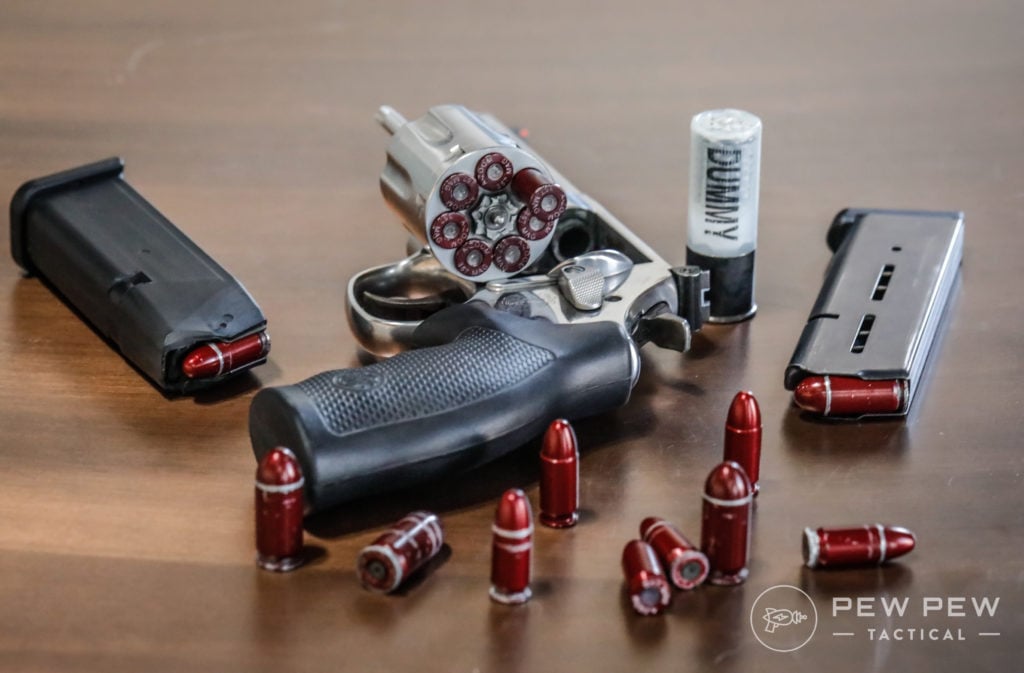
Still…my advice is to consult your owner’s manual to double-check.
Snap Caps
11
Prices accurate at time of writing
VIEW DETAILS
There are a lot of snap caps and dummy rounds on the market, so be sure to take a look at the Best Dummy Rounds & Snap Caps For Dry-Fire Practice!
Why Dry Firing?
The main point of dry fire practice is to develop muscle memory so you consistently produce a great trigger pull and don’t flinch when it’s time for real shooting.
And if you’ve developed some bad habits along the way, it does a great job of rewiring you back over time.
At least for me, I find that after a good amount of time (a week or two) of dry firing a few minutes a day, I become “one” with my trigger and grip.
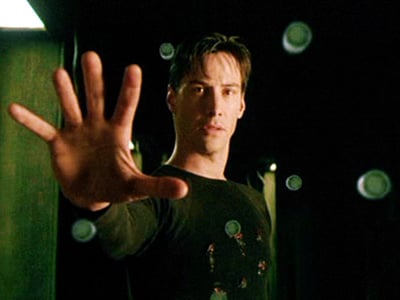
My grip just feels right, and I can sense all the little nuances in the trigger pull. And when I focus on the front sight and pull the trigger, the front sight stays super steady.
It takes a lot of practice (and perfect practice) to reach that point. And it’s a diminishing skill that needs to be kept up to date too. Even just a few days of not practicing I can feel some differences the next time I dry fire or shoot.
Best Way to Dry Fire
First, always make sure your gun is unloaded and follow the 4 Rules of Safety.
- Guns are always loaded (treat them as such and don’t have live ammo in the room)
- Never let the muzzle cover anything you don’t want to destroy (point it in a safe direction)
- Keep your fingers off the trigger until you’re ready to shoot
- Be aware of your target and what is beyond
I always check if my gun is empty every time I pick it up, even if it’s between strings of dry firing. It just gets you into a good habit.
I also like to set up targets or at least small things that are safe to “shoot” at such as a light switch or doorknob.
I focus on the front sight (both eyes!) and remember to squeeze so slowly that I’m surprised when the gun clicks.

I sometimes actually say “squeeze” out loud to make sure I do it. Once you can do it slowly, you can speed it up a little as long as the front sight still doesn’t move.
One great way in the beginning to make sure the sight doesn’t move is to physically place a small coin on top of the front sight during your exercise. If it doesn’t fall off, you’re probably doing a great job.
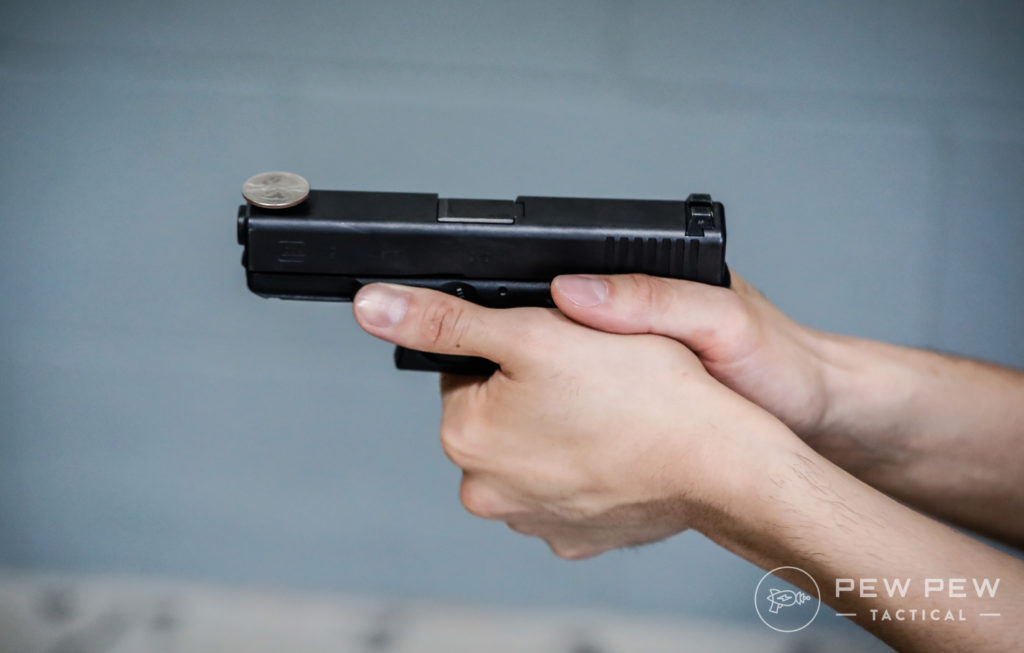
Finally, remember to practice both full trigger pulls (with the slack) and trigger reset pulls. To do a trigger reset pull, leave your trigger finger depressed at the end of the first shot, and rack your slide with your non-dominant hand.
For some guns you don’t have to rack it all the way back, sometimes just a half-inch or so is enough. Get back into your two-handed grip, let the trigger reset (listen for the click), and shoot.
For the longest time I only practiced full trigger pulls and got great at those, but when I had followup shots I started jerking the trigger. You’ll likely be firing both ways so be prepared for anything!
Range Practice
Too much range practice in the beginning is sometimes detrimental, since you haven’t built up the muscle memory of dry firing, and instead you build up a flinch reaction.
Don’t worry if that’s you already…with some quality dry firing at home you can overcome it.
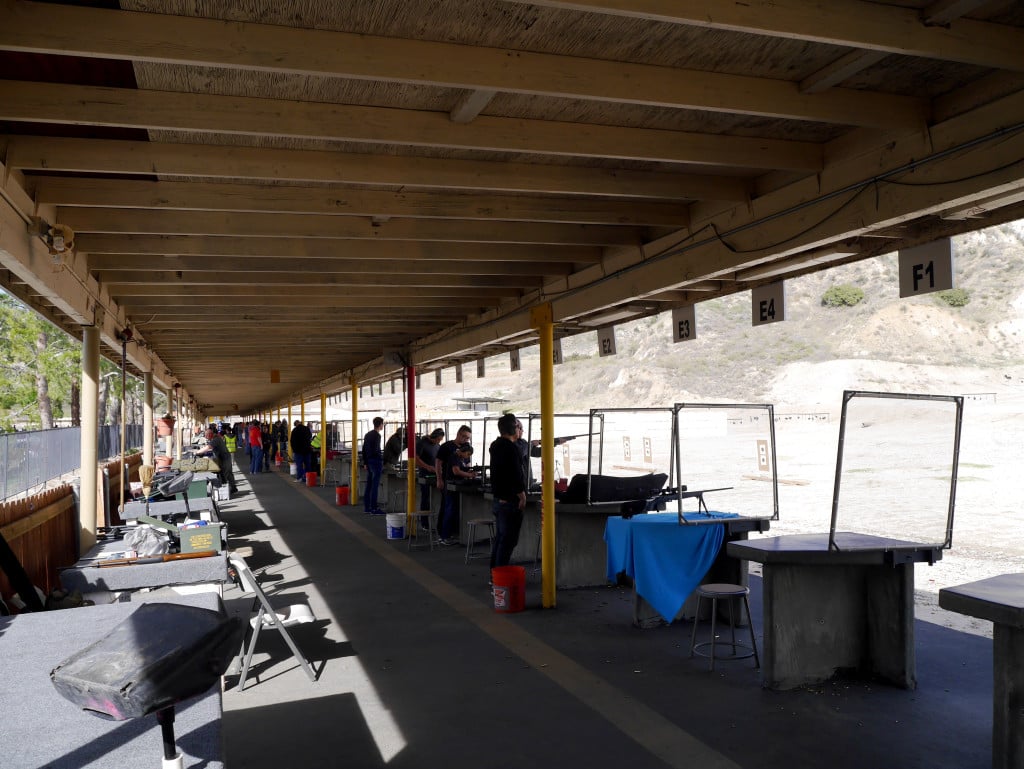
I like to always have some dry firing sessions at home in between range days. And when I get to the range, I always dry fire a couple shots before loading up real ammo.
I start off at short distances since there might be a lot of effects that come into play at 25 yards (wind, ammo, etc) but it’s all me at 3-5 yards.
Sometimes if it’s a new gun or if I’m doing really poorly, I’ll start shooting with a supported position first to get some confidence and set a baseline accuracy. You can do this by sitting down and placing your elbows on the bench, or leaning into the counter.
I also found this graphic to be immensely helpful in diagnosing my shooting errors.
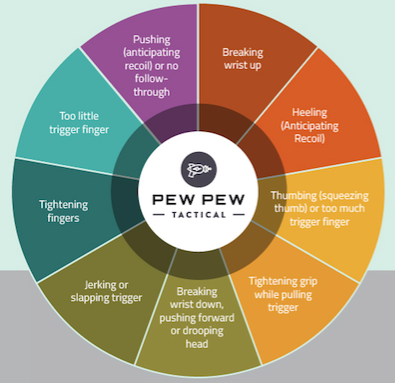
Have a target, shoot a couple shots at it, and see where they land in relation to the chart.
If you’re a lefty, you will have to mirror image the findings. And if there’s no overt grouping (your shots are all over the place), it’s likely your grip is not consistent.
I usually start off pretty strong and as I get more comfortable I forget some of my lessons, such as remembering to squeeze. That’s when I start telling myself “squeeze” every shot again.
Lastly, there’s a great drill to run once in a while if you have a buddy help you load a magazine with both live ammo and snap caps.
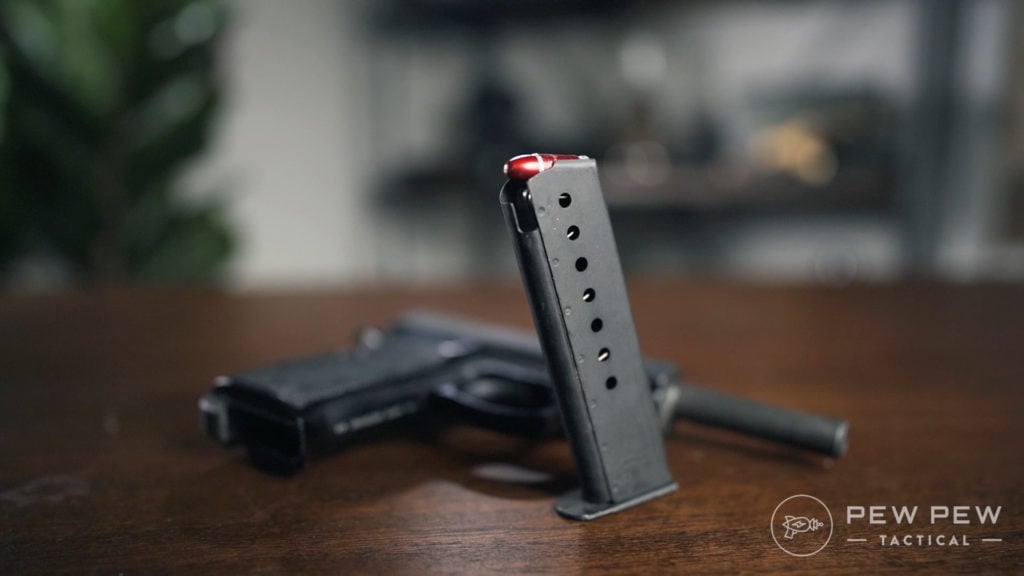
You need a buddy since they can mix up the order without you knowing. The point is to see if you have a natural flinch during shooting which will show up when you reach the snap caps and they do not go bang. It’s a great visual moment to see how you actually deal with the recoil.
It’s one thing to be dry firing and shoot perfectly, but another once real recoil is entered into the equation. My own natural flinch was a pretty pronounced pull down and to the left.
Conclusion
And that’s it…now you’ll be able to work on your fundamentals, dry-firing, and range shooting to become a more accurate pistol shooter. Remember, you won’t become a pro in a few days.
The guy next to you at the range nailing all the steel targets probably has dozens of hours of dry firing and thousands of rounds under his belt.
And…don’t do this!

